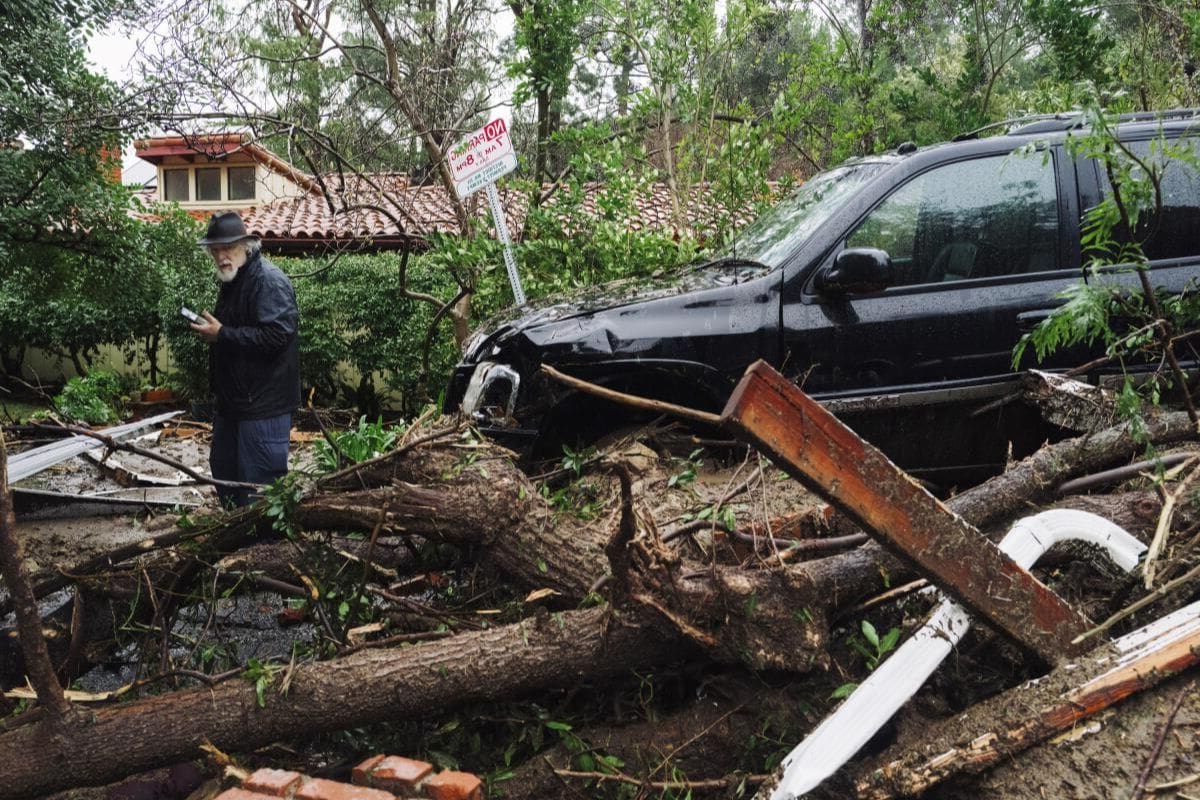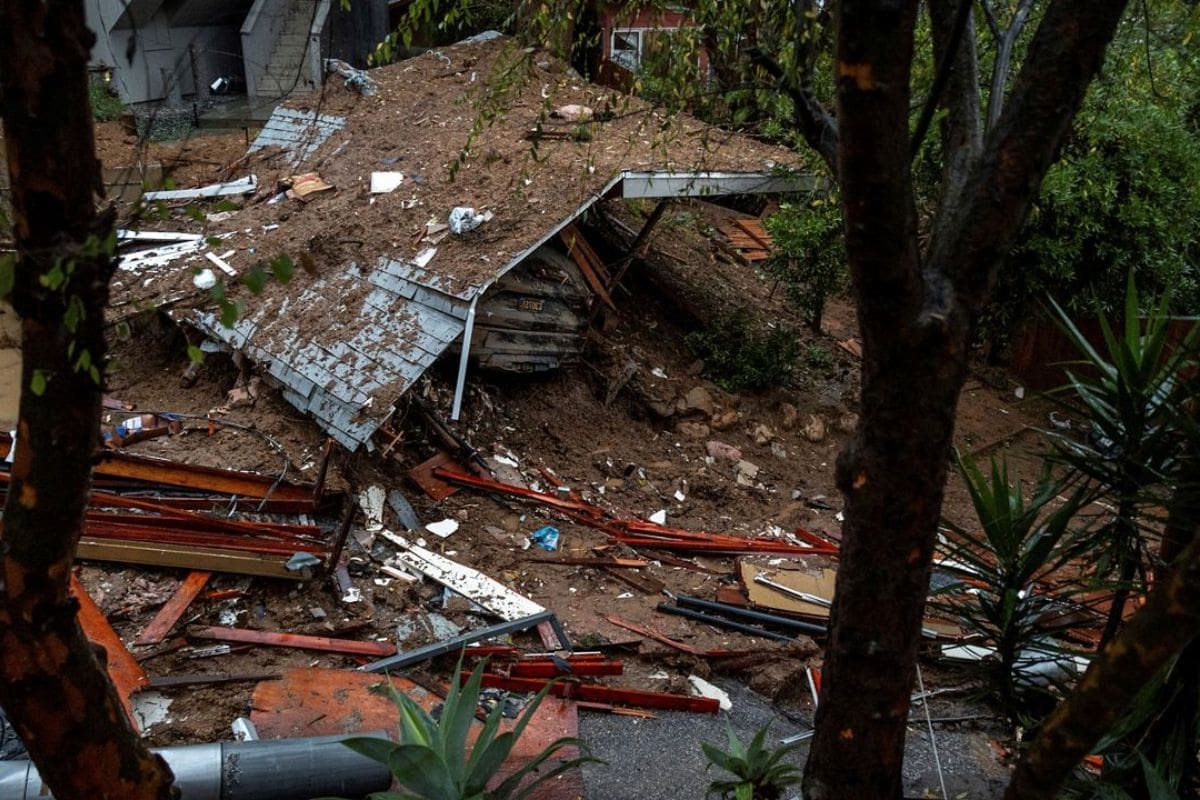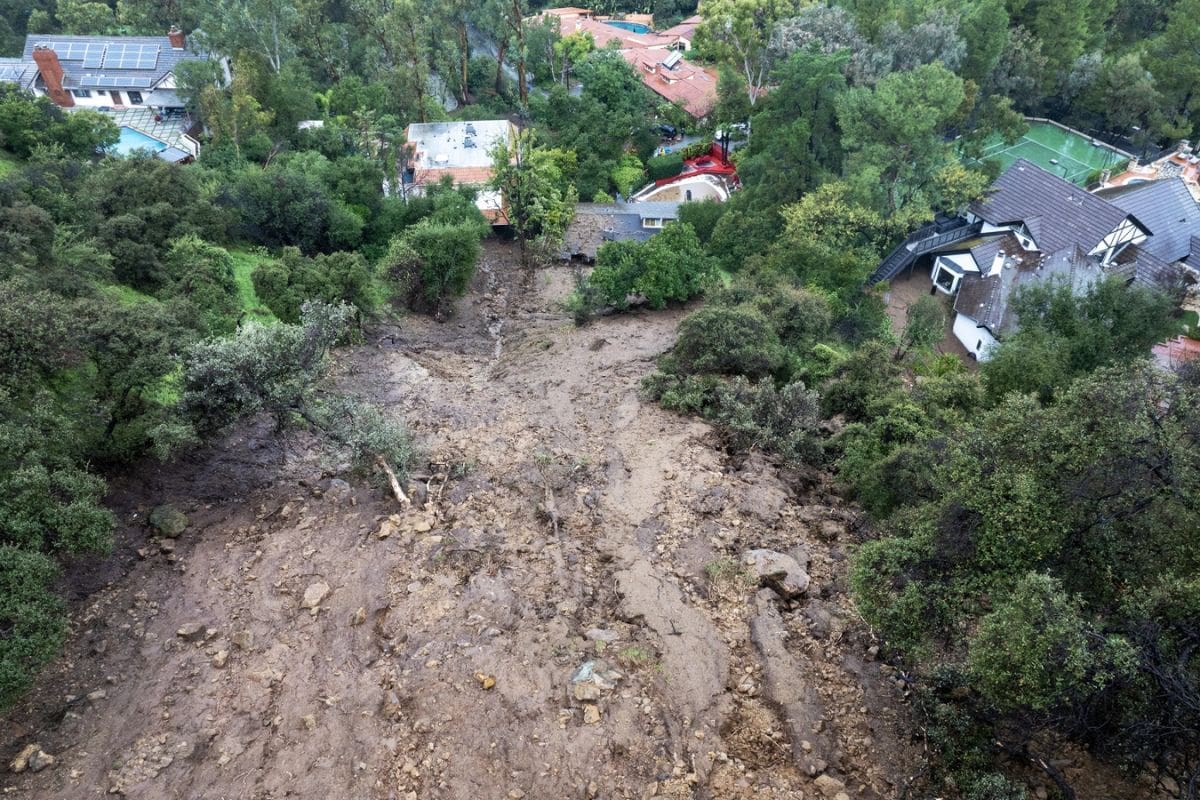Southern California Share Stories: In the wake of the recent unprecedented mudslides that have ravaged Southern California, residents have been left grappling with the aftermath of destruction and facing tough decisions.
One Beverly Crest resident, who has endured 23 years of living amidst the constant threat of evacuations and mudslide damage, reflects on the resilience and determination it takes to rebuild time and time again.
However, the impact of these mudslides extends far beyond individual homes, as over 400 trees have fallen across Los Angeles, posing significant challenges for the dedicated cleanup crews.
And while the physical toll of the mudslides is undeniable, the lingering impact of widespread power outages adds another layer of complexity to the already arduous cleanup efforts.
Stay tuned as we the human toll of this natural disaster and explore the unexpected environmental silver lining that it brings.
Key Takeaways
- Mudslides in Southern California have caused unprecedented devastation, damaging homes and forcing evacuations.
- Residents, like the Barrons, are facing tough decisions about whether to return after repairs, weighing their love for the area against the trauma experienced from the disaster.
- The fallen trees in Los Angeles due to the storm have had a significant citywide impact, posing logistical challenges and safety concerns for cleanup crews.
- Widespread power outages persist in Southern California, depriving residents of essential services and hindering cleanup efforts, while also posing safety hazards.

Unprecedented Mudslides Ravage California Homes: Residents Face Tough Decisions
Residents in Southern California are faced with difficult choices as they grapple with the unprecedented devastation caused by mudslides, leaving homes damaged and forcing evacuations.
The recent storm that triggered the mudslides has left many residents, like the Barrons, with an uninhabitable residence. Now they must make the tough decision of whether to return once repairs are complete. This decision is not an easy one, as it requires them to weigh their love for the area against the trauma they have experienced from the recent disaster.
The Barrons are not alone in facing this dilemma, as many other residents across California are also contemplating their future in the wake of the mudslides. It is a time of uncertainty and tough decision-making for these affected residents.
Beverly Crest Resident Reflects on 23 Years Amidst Evacuations and Mudslide Damage
Amidst the widespread devastation caused by the unprecedented mudslides in Southern California, one resident of Beverly Crest in the Santa Monica Mountains, Jill Shinefield, reflects on her 23 years in the community, witnessing evacuations and the damage inflicted by these destructive natural disasters. Despite the constant threat of mudslides, Shinefield chose to stay in her home, considering its location away from the hillside. She admits that mudslides were not a significant concern in their community compared to the ever-present risk of fires. However, her experiences over the years have given her a first-hand understanding of the impact mudslides can have on the community. To illustrate this, consider the following table:
| Year | Evacuations | Damage |
|---|---|---|
| 1998 | Yes | Minor |
| 2005 | Yes | Moderate |
| 2018 | Yes | Severe |
These incidents serve as a reminder of the unpredictable nature of nature’s forces and the importance of being prepared for such disasters.
Citywide Impact: Over 400 Trees Fall in Los Angeles, Posing Challenges for Cleanup Crews
The aftermath of the storm in Los Angeles revealed the extent of the citywide impact, as over 400 trees fell, presenting significant challenges for cleanup crews.
The sheer number of fallen trees highlights the force of the storm and the scale of the damage caused.
Cleanup crews now face the daunting task of removing these trees and restoring order to the city’s streets.
The fallen trees pose not only a logistical challenge but also a safety concern, as they obstruct roads and sidewalks, potentially causing accidents or injuries.
Furthermore, the cleanup efforts may be prolonged due to the sheer volume of fallen trees, requiring additional manpower and resources.
The city of Los Angeles will need to mobilize its resources efficiently to address this citywide impact and restore normalcy to the affected areas.

Also Read: California Lawmakers Challenge Controversial Income-Based Electric Bills
Lingering Impact: Widespread Power Outages Persist, Posing Risks Amidst Cleanup Efforts
As cleanup efforts continue in Southern California, the impact of the mudslides is compounded by the persistent, widespread power outages, posing significant risks to both residents and the ongoing restoration process. Despite a reduction in peak-level electrical outages, more than 71,000 customers remain without power, primarily in northern and central parts of the state.
These power outages not only deprive residents of essential services such as heating and refrigeration but also hinder the progress of the cleanup crews who rely on electricity for their equipment.
Furthermore, the lack of power hampers communication capabilities, making it harder for affected communities to receive updates and assistance.
In addition, the lingering power outages create safety hazards, as downed power lines and flooded roads remain a risk. Authorities caution against approaching these hazards, emphasizing the importance of staying vigilant and avoiding unnecessary risks.
The restoration process is further challenged by these ongoing power outages, prolonging the recovery efforts in Southern California.
Human Toll and Environmental Silver Lining: Storm Claims Lives, Yet Boosts California’s Water Supply
The recent storm in Southern California had tragic consequences, claiming nine lives due to falling trees, power failures, and drowning, but it also brought about a significant boost to the state’s water supply.
Despite the human toll, the drenching rains proved to be a silver lining for California’s water scarcity woes. The storm resulted in a substantial increase in the Sierra Nevada snowpack, a critical water source for the state. This boost in the water supply provides much-needed relief and offers hope for the future.
It serves as a reminder of the delicate balance between environmental challenges and the essential need for water resources. While the loss of life is devastating, the positive impact on California’s water supply is a glimmer of hope amidst the tragedy.
Conclusion Of Southern California Share Stories
The devastating mudslides in Southern California have caused significant damage to homes, resulted in evacuations, and posed challenges for cleanup crews.
The impact of the mudslides can be seen through the fallen trees and widespread power outages.
Despite the human toll, the storm has also provided a silver lining by boosting California’s water supply.
The recovery process will be lengthy and challenging, but the resilience and determination of the affected communities will undoubtedly prevail.
Our Reader’s Queries
Where do mudslides occur in California?
Among the most infamous deep-seated landslides took place in La Conchita, Ventura County, and Bluebird Canyon, Laguna Beach, Orange County. Both areas had encountered substantial rainfall in the months leading up to the incidents, with more recent storms triggering the disastrous events.
Why is Southern California likely to have landslides?
Due to the saturated soils, reaching a supersaturated state with six to 12 inches of rainfall across the region, even a minimal amount of additional rain has the potential to trigger landslides, mudslides, and other debris flows.
Why does California get so many mudslides?
The combination of climate change and El Niño collaborates to intensify storms. California, recovering from years of drought and wildfires, faces heightened susceptibility to mudslides and flooding. Meteorologist Ryan Maue highlighted the imminent risk, stating, ‘The atmospheric river firehose is directed towards Los Angeles.
What kind of natural disasters happen in Southern California?
Los Angeles faces heightened vulnerability to the devastating impacts of wildfires, flooding, mudslides, earthquakes, and extreme heat. Given the myriad threats, the significance of preparedness for both the city and its residents cannot be emphasized enough.

